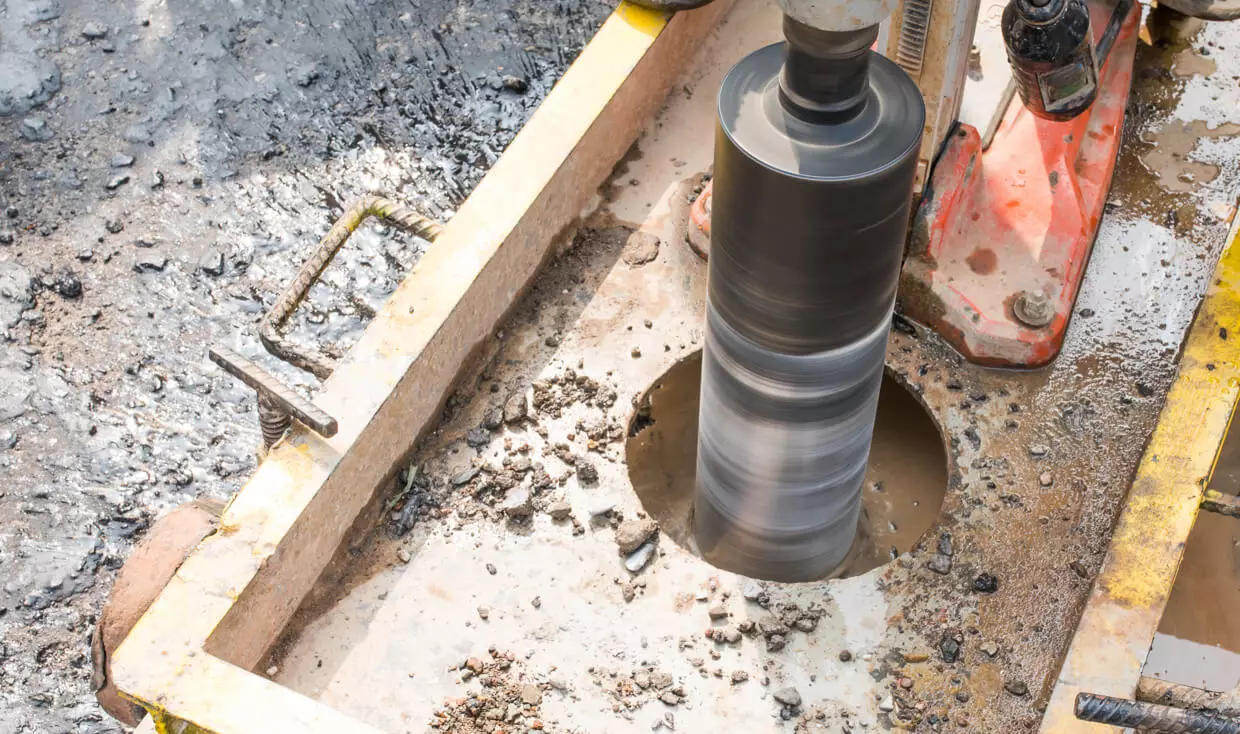The project
At the request of JCB Landpower Ltd, Simtec Materials Testing was tasked with the extraction and assessment of core samples from an existing concrete slab at one of their assembly plants.
The samples were required to assess the integrity of the concrete, the thickness of the in-situ slab, and the presence of reinforcement ahead of orders being placed for new gantry crane installation in three locations.
The challenge
On the first visit, a total of 8 number cores were extracted from various locations in the concrete slab using hydraulic drilling equipment. The core samples were subsequently returned to the laboratory for inspection and testing.
The 8 number cores were submitted for compressive strength testing in the laboratory, where, along with compression testing, a visual assessment of air void content was carried out to adjust the estimated cube strength.
The samples were trimmed and tested in accordance with BS EN 12504:2009 and EN 12390-7, with reports issued for each individual core.
The nominal 100mm diameter cores showed significant variation in slab thickness across the individual core diameters and the set of samples. A minimum value of 54mm (core 8) and a maximum of 157mm (core 6) was recorded. Within each core, the minimum variation across the sample was 6mm (core 1) and 52mm (core 6). This result suggested the base of the slab to be very uneven or possibly that disintegration was occurring.
Reinforcement was noted in three of the cores and suggested a mesh consisting of 20mm diameter longitudinal bars and 8mm diameter transverse bars, though no discernible pattern was observed.

The solution
Compaction of the concrete was found to be generally good, with no appreciable air voids evident in six of the eight samples. The remaining two samples (cores 1 and 6) were visually assessed to have around 1.5% air voids. This was taken into account by the calculation of estimated cube compressive strength.
The maximum fail loads ranged from 204.6kN (core 1) to 345.5kN (core 3). Significantly, the lowest value was returned by the core containing the most reinforcement.
The testing results are given in tabular format below.
Conversation with the prospective crane suppliers and review of the supplied information regarding loading values showed the existing slab was unlikely to be adequate for the proposed installations.
Calculations of the maximum possible downloads for each gantry crane were supplied by the manufacturers and ranged from 150kN for a 5.0 tonne option to 320kN for a 12.5 tonne option. The proposed base pads were typically 800mm by 400mm (0.32m2), which would create extremely high point loads at the column bases, so the client was advised that increases to the surface area of the pads would substantially reduce the loading of the slab at the station locations. Anecdotal evidence from the suppliers suggested that when the existing gantries were installed some years ago, a number of bases had to be reconstructed to satisfy the loading requirements of the works.
The slab thickness required by the crane suppliers ranged from 150mm to 200mm. Therefore, the variable measured thickness and density of the existing concrete slab gave cause for concern. Although generally believed to be poor, the ability of the concrete slab to meet the load-bearing characteristics required could not be assessed adequately from the data gathered here, so structural analysis of each location was advised.
